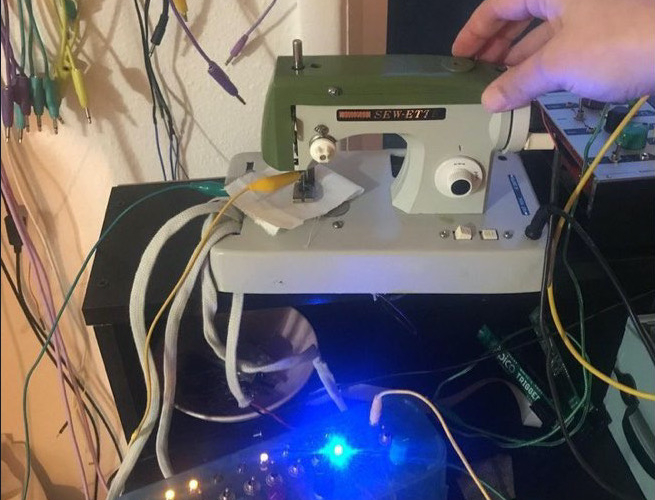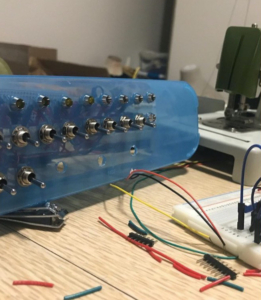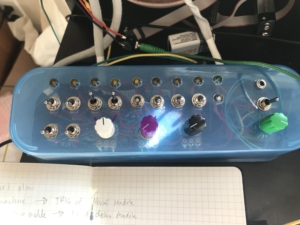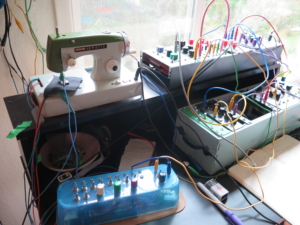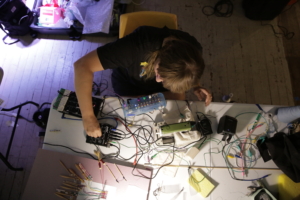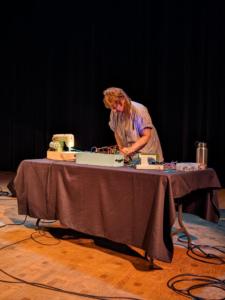Sewing machines are naturally percussive. The needle goes up and down at a speed controlled by a foot pedal in a steady rhythmic pattern. Other than mic up a machine to capture it, I thought it would be great to be able to control how the timing of the needle pulsing up and down like a sequencer, meaning over a certain amount of time, I could tell when the needle went up and down or paused and how fast it moved through the pattern.
To do this, I looked for battery-operated sewing machines, particularly retro toy sewing machines. Once I found a suitable one, I decided to replace the existing motor with a stepper motor that would have enough torque to operate the mechanics and could controlled by a microcontroller.
I created a control box of 8 switches. When a switch is “on” the needle goes through an up/down cycle, if “off” it doesn’t move and pauses. A speed dial and knobs for manually moving the needle when it wasn’t moving through a pattern were added. Taking a bit from my 16th and Mission project from 15 years ago, when the needle goes down, I have it go through a piece of conductive fabric. The switch made of the conductive fabric and the wired needle can be used to trigger many sounds. I decided to add a simple oscillator circuit that could be switched between a square and triangle waveform with a pitch knob. To add some more variables to play with, I added an input that can modulate the waveform with a control voltage input from my modular eurorack setup. Lastly, there is a mono 1/8″ output.
These snippets are from a Sound Hackers night where I spoke about this project and did a short demo performance. Sound Hackers is an event in Portland, OR, and is organized by Helen Leigh.
The above picture was taken at a sound performance series called NonSeq in Seattle organized and curated by Afroditi Psarra.
